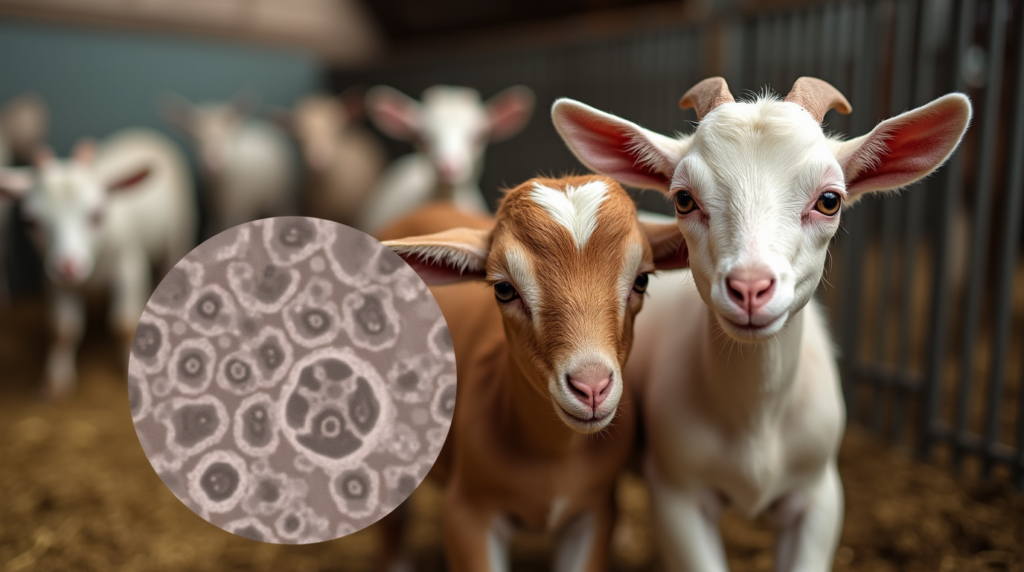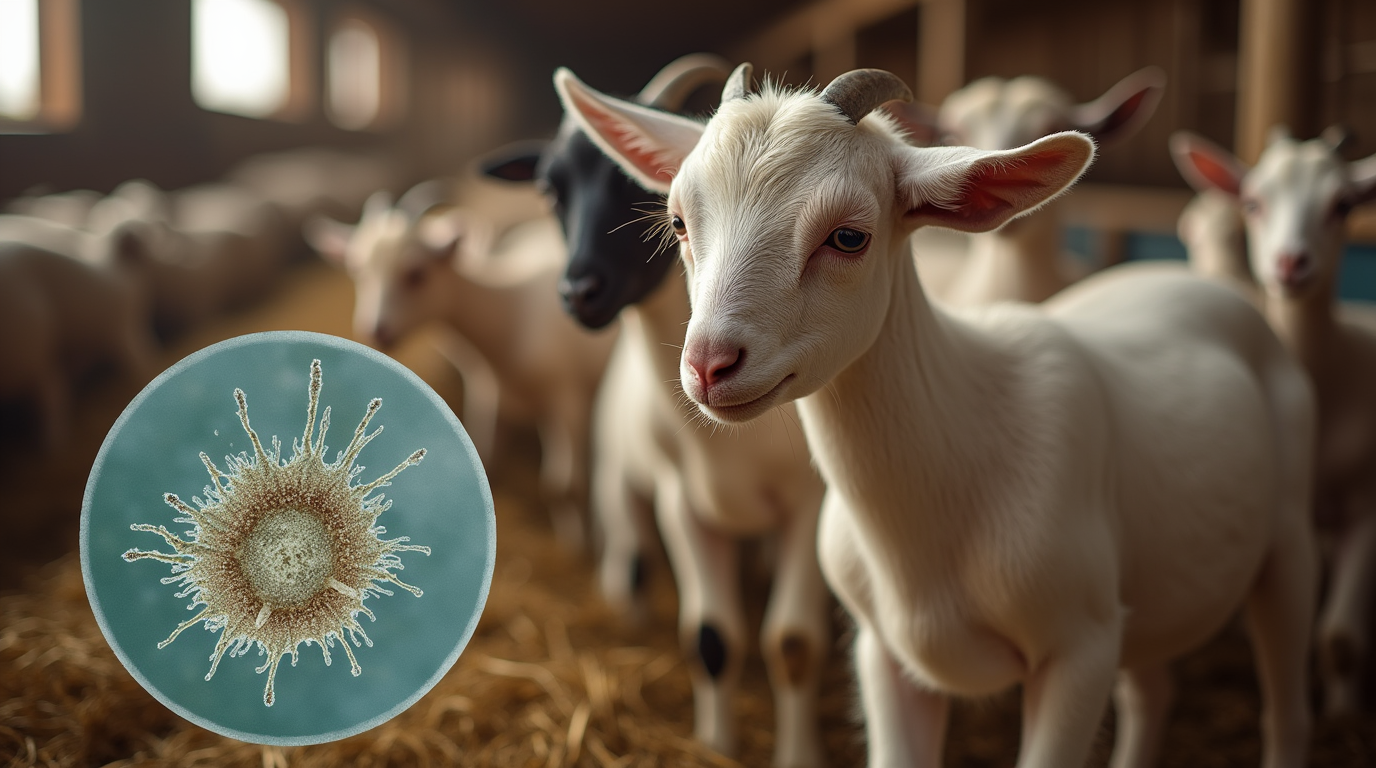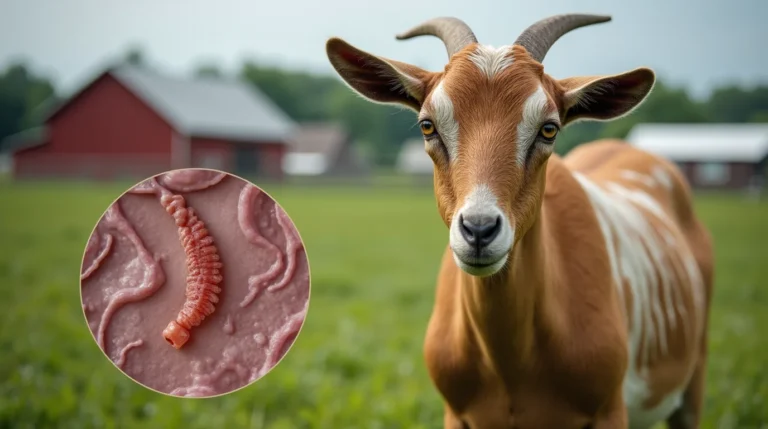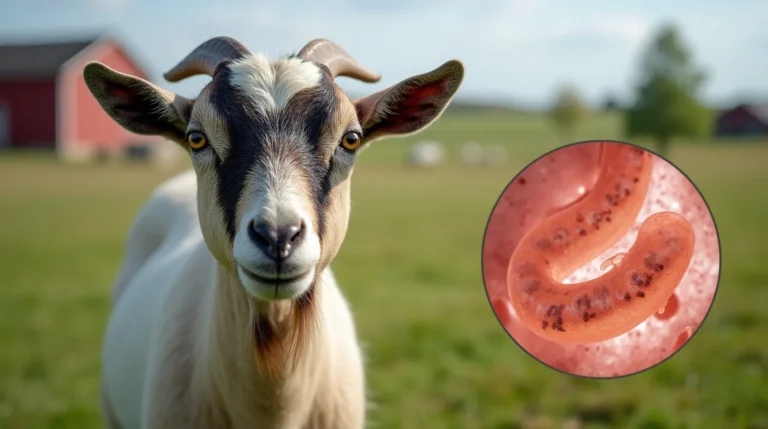Protect your goat herd from deadly clostridial diseases In Goats, with our expert-backed prevention strategies. Learn how to safeguard your livestock’s health and productivity.

Table of Contents
Clostridial diseases pose a significant threat to goat herds worldwide, capable of causing devastating financial losses and potentially wiping out entire livestock populations. These aggressive bacterial infections can strike quickly, often with fatal consequences, making prevention the cornerstone of responsible goat management. In this comprehensive guide, we’ll explore seven critical prevention strategies that every goat farmer must understand to protect their valuable livestock from these dangerous diseases.
Clostridial diseases are caused by anaerobic bacteria from the Clostridium genus, which thrive in oxygen-poor environments and can produce potent toxins that rapidly attack an animal’s system. Understanding these diseases and implementing robust preventive measures is not just recommended—it’s essential for maintaining a healthy, productive goat herd.
Understanding Clostridial Diseases in Goats
What Are Clostridial Diseases?
Clostridial diseases are a group of serious bacterial infections caused by various Clostridium species, including:
- Clostridium perfringens (causing enterotoxemia)
- Clostridium tetani (causing tetanus)
- Clostridium chauvoei (causing blackleg)
- Clostridium septicum (causing malignant edema)
Prevalence and Impact
Recent agricultural studies indicate that clostridial diseases can result in:
- Up to 30% mortality in unvaccinated herds
- Significant economic losses estimated at $500-$1,500 per affected animal
- Potential complete herd devastation if left unmanaged
7 Prevention Strategies for Clostridial Diseases in Goats
1. Comprehensive Vaccination Program
Key Vaccination Recommendations
- Implement a multi-strain clostridial vaccine protocol
- Vaccinate kids at 6-8 weeks of age
- Provide booster shots annually
- Ensure pregnant does are vaccinated 2-4 weeks before kidding
Vaccination Schedule:
AgeVaccination TypeBooster Requirement6-8 weeksInitial multi-strain vaccineYes10-12 weeksBooster shotOptionalAnnuallyMaintenance vaccinationRecommended
2. Proper Nutrition Management
Balanced nutrition plays a crucial role in preventing clostridial diseases by:
- Maintaining optimal rumen health
- Supporting immune system function
- Preventing sudden dietary changes that can trigger bacterial overgrowth
Nutritional Guidelines:
- Provide high-quality, consistent forage
- Gradually introduce dietary changes
- Ensure proper mineral and trace element supplementation
- Monitor body condition scores regularly
3. Hygiene and Sanitation Practices
Effective hygiene strategies include:
- Regular cleaning of birthing areas
- Proper manure management
- Disinfecting equipment and facilities
- Controlling rodent and pest populations
4. Stress Reduction Techniques
Stress can compromise goat immune systems, making them more susceptible to clostridial diseases. Minimize stress by:
- Providing comfortable shelter
- Maintaining consistent routines
- Avoiding overcrowding
- Managing social hierarchies
- Implementing low-stress handling techniques
5. Wound Care and Management
Proper wound management is critical in preventing clostridial infections:
- Clean and disinfect wounds immediately
- Use appropriate antiseptic solutions
- Monitor wound healing
- Isolate injured animals if necessary
6. Pasture and Environment Control
Environmental management strategies:
- Rotate grazing areas
- Avoid waterlogged or marshy pastures
- Ensure proper drainage
- Remove potential sources of contamination
- Implement biosecurity protocols
7. Regular Veterinary Monitoring
Comprehensive veterinary care involves:
- Routine health check-ups
- Fecal testing
- Blood work analysis
- Professional consultation on herd health strategies
Recommended Pet Products on Amazon
- Multi-Strain Clostridial Vaccine Kit
- Livestock Disinfectant Solution
- Veterinary Wound Care Spray
- Trace Mineral Supplement for Goats
Frequently Asked Questions (FAQ)
Q1: How often should goats be vaccinated against clostridial diseases? A: Goats should receive initial vaccinations at 6-8 weeks and annual booster shots thereafter.
Q2: Can clostridial diseases be transmitted between animals? A: Yes, these bacterial infections can spread through contaminated environments, wounds, and bodily fluids.
Q3: Are some goat breeds more susceptible to clostridial diseases? A: While all goats can be affected, young kids and animals with compromised immune systems are most vulnerable.
Conclusion
Preventing clostridial diseases in goats requires a holistic, proactive approach. By implementing these seven strategic prevention methods, farmers can significantly reduce the risk of devastating bacterial infections and maintain a healthy, productive herd.
Call to Action: Have you experienced challenges with clostridial diseases in goat herd? Share your insights and experiences in the comments below! For more expert pet care tips and comprehensive livestock management guides, visit BlithePet
Additional Resources
- Veterinary consultation
- Local agricultural extension services
- Livestock health workshops





